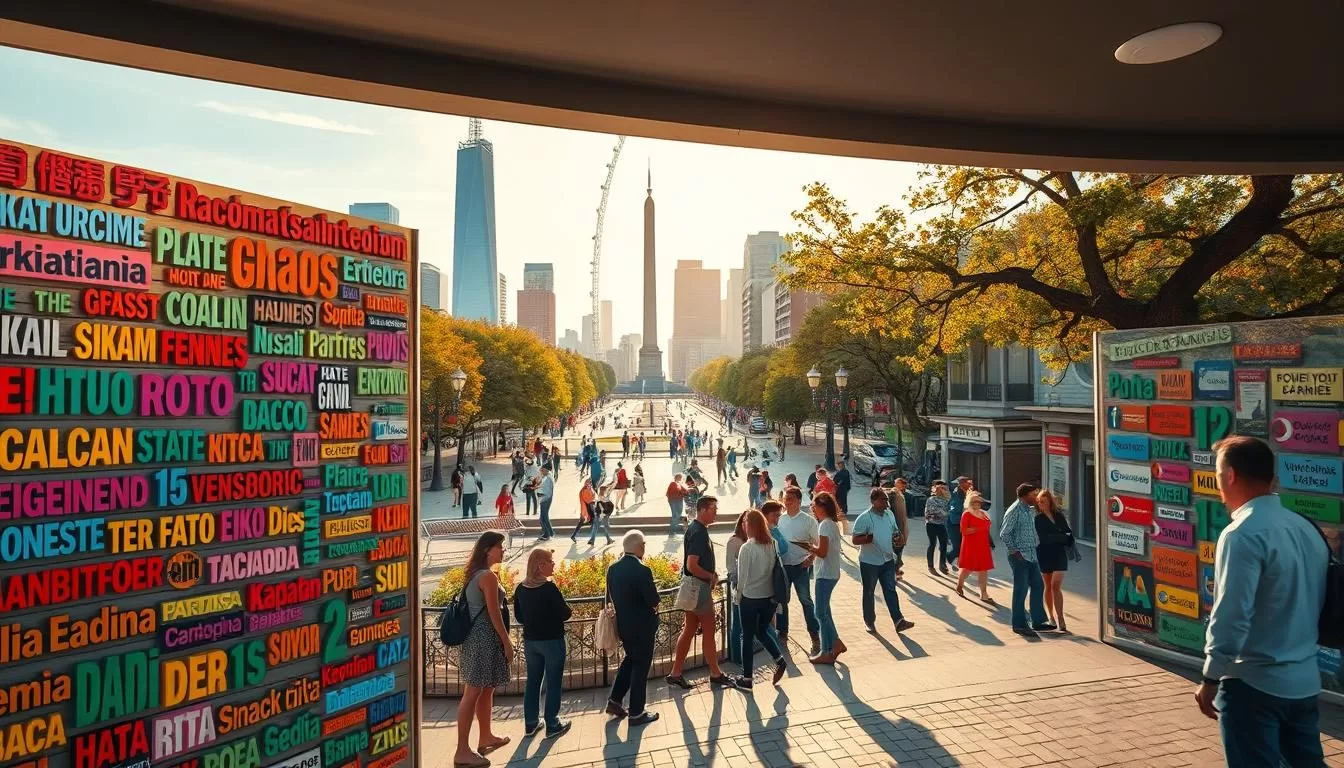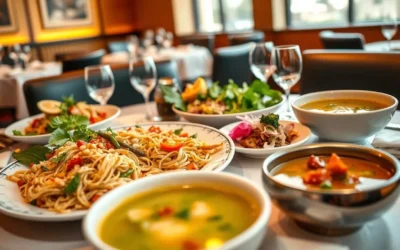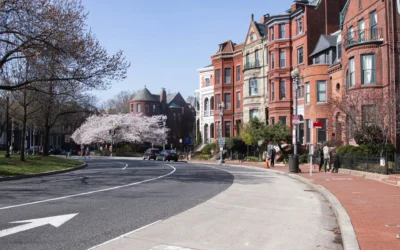Did you know the country you live in is a melting pot of linguistic diversity? While there’s no federal official language, English is the most commonly used. Over 350 different languages are spoken in homes across the nation, making it a truly unique cultural mosaic.
According to the Census Bureau, nearly 68 million people speak a language other than English at home. This reflects the rich tapestry of cultures and traditions that shape the population. Spanish, for example, is the most common non-English language, with millions of speakers nationwide.
This introduction sets the stage for exploring how language connects people in the United States. From regional dialects to immigrant influences, the story of language here is as diverse as its people.
Embracing the Language Tapestry in the US
Immigration has woven a vibrant language mosaic across neighborhoods. Nearly 68 million people speak a language other than English at home, reflecting the nation’s dynamic cultural heritage. This linguistic diversity is a testament to the contributions of immigrant communities over generations.
Everyday conversations at home reveal the richness of this tapestry. From Spanish to Mandarin, these spoken language traditions are passed down through families. For example, New York City is a hub where diverse words and dialects blend seamlessly, creating a unique urban linguistic identity.
Immigration continues to enrich local dialects and vocabulary. Cities like Los Angeles and Miami showcase how community traditions shape the way people communicate. This ongoing evolution highlights the importance of embracing language diversity in daily life.
Here’s a glimpse of how major languages contribute to this tapestry:
| Language | Speakers (Millions) | Key Regions |
|---|---|---|
| Spanish | 41 | California, Texas, Florida |
| Chinese | 3.5 | New York, California |
| Tagalog | 1.7 | California, Nevada |
| Vietnamese | 1.5 | Texas, California |
This blend of languages not only preserves cultural identity but also fosters a deeper understanding of the nation’s history. As you explore different neighborhoods, you’ll notice how each word and accent tells a story of resilience and adaptation.
United States: Official and widely spoken languages: A Comprehensive Guide
Understanding language trends helps you grasp the cultural fabric of the nation. The Census Bureau collects detailed data on how people communicate, offering insights into the population’s diversity.
Recent reports show over 245 million native English speakers, while more than 43 million people speak Spanish at home. These numbers highlight the growing influence of non-English languages in daily life.
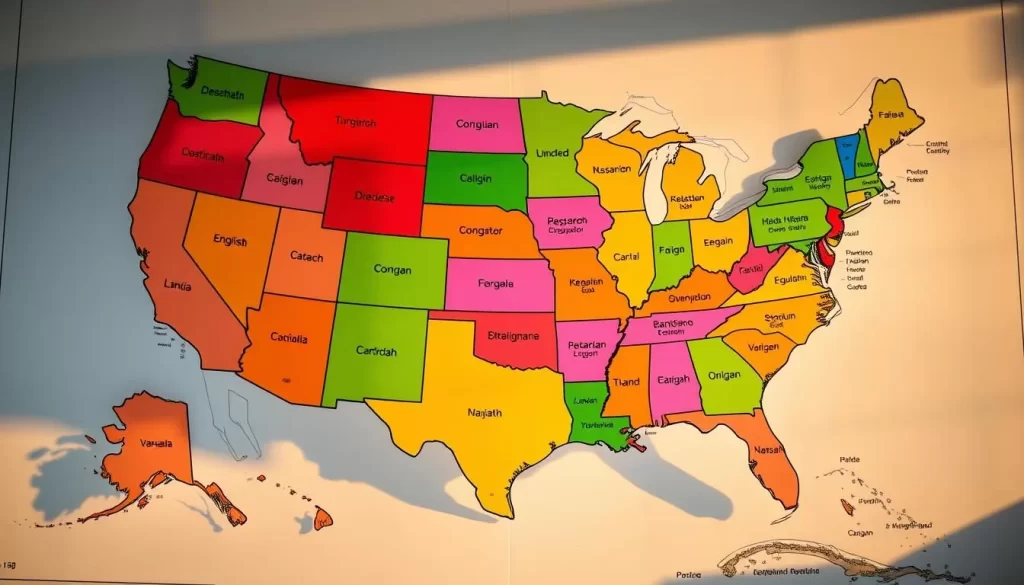
Major cities like Los Angeles, New York, and Miami play a significant role in shaping these trends. For example, Spanish is the most commonly spoken non-English language in these areas.
The Census Bureau’s data collection process involves analyzing responses from individuals aged 5 and older. This datum helps inform public health, voting, and safety communications.
Here’s a quick look at how language spoken patterns vary across the country:
- California: High Spanish and Chinese speakers.
- Texas: Strong Spanish and Vietnamese communities.
- Florida: Significant Spanish and Haitian Creole populations.
These trends not only reflect cultural diversity but also influence local policies and services. By understanding these patterns, you gain a deeper appreciation for the nation’s linguistic richness.
English: The Unofficial Official Language of America
From coast to coast, English unites diverse communities. While it’s not federally mandated, it’s the de facto language used in government, education, and daily life. This widespread use makes it the glue that holds the nation together.
Regional dialect variations add unique flavors to american english. In New York, you’ll hear sharp, fast-paced accents, while in Los Angeles, the speech is often more relaxed. These differences reflect local culture and history.
Dialect Variations Across Regions
Every region has its own twist on american english. Southern states are known for their drawn-out vowels and friendly slang. Meanwhile, the Midwest features a neutral accent often heard in national media.
In cities like New York, the hustle and bustle shape the way people speak. Words are clipped, and conversations move quickly. On the West Coast, Los Angeles residents often blend casual speech with influences from diverse communities.
Official Language Policies by State
While there’s no federal mandate, 32 states have declared English as their official language. These policies influence education, government communications, and public services. They reinforce the role of English in daily life.
For example, states like California and Texas emphasize English in schools. This ensures that students are prepared for a language united by common usage. These policies also help maintain cultural cohesion.
From regional slang to state laws, English continues to evolve. It’s a reflection of the nation’s diversity and a testament to its ability to adapt. Whether you’re in the South or the Northeast, you’ll find that american english tells a story of unity and local identity.
Spanish: A Rising Second Language
Spanish has become a cornerstone of communication in many communities. With over 43 million native speakers, it’s the second most spoken language in the country. This growth reflects deep historical ties and vibrant cultural exchanges.

Historical Influences and Regional Growth
The roots of Spanish in America trace back to regions once under Mexican rule. Cities like Los Angeles and San Diego bear names that reflect this heritage. Today, states like California, Texas, and Florida are hubs for Spanish-speaking community members.
In New York City, Spanish thrives as a vital part of daily life. The city’s diverse neighborhoods showcase how this language bridges cultures. From family gatherings to local businesses, Spanish is woven into the fabric of everyday interactions.
Spanish in Everyday American Life
Spanish enriches cultural expression in homes and neighborhoods. Families pass down traditions through stories, songs, and recipes. This family-centered approach keeps the language alive and vibrant.
In major cities, Spanish is a key player in education and business. Schools offer bilingual programs, and employers value Spanish-speaking employees. This demand highlights the growing importance of Spanish in the state’s economic landscape.
By 2050, projections suggest the Spanish-speaking community could surpass other nations. This growth underscores its role as a major force in shaping the nation’s linguistic future.
Asian Languages Shaping Modern America
Asian languages have become a vital part of the cultural fabric in urban centers. From bustling neighborhoods in San Francisco to vibrant communities in New York City, these languages reflect a rich history of immigration and cultural exchange.
Over 7% of the population traces their roots to Asia, with many preserving their linguistic heritage at home. This connection to their origins strengthens family bonds and enriches local cultures.
Chinese and Tagalog Contributions
Chinese, including Mandarin and Cantonese, is one of the most widely spoken Asian languages. Its influence dates back to the 19th-century Gold Rush in San Francisco, where Chinese immigrants laid the foundation for thriving communities.
Tagalog, spoken by many Filipino immigrants, has also made significant contributions. Families pass down traditions through stories and songs, ensuring the language remains alive in homes and schools.
Vietnamese and Korean Communities
Vietnamese speakers have established vibrant communities in cities like Los Angeles and New York City. Their cultural festivals and businesses showcase the beauty of their heritage.
Korean communities, known for their strong family values, have also flourished. From bilingual education to cultural institutions, they play a key role in shaping the nation’s linguistic diversity.
These languages not only preserve cultural identity but also foster a deeper understanding of the nation’s history. As you explore these communities, you’ll see how each word and accent tells a story of resilience and adaptation.
Indigenous and Creole Languages: A Cultural Legacy
The story of Indigenous and Creole languages is a journey through time and culture. These language forms carry the echoes of history, blending influences from diverse traditions into a unique tapestry. Over a thousand Indigenous languages are still used today, reflecting the resilience of their community members.
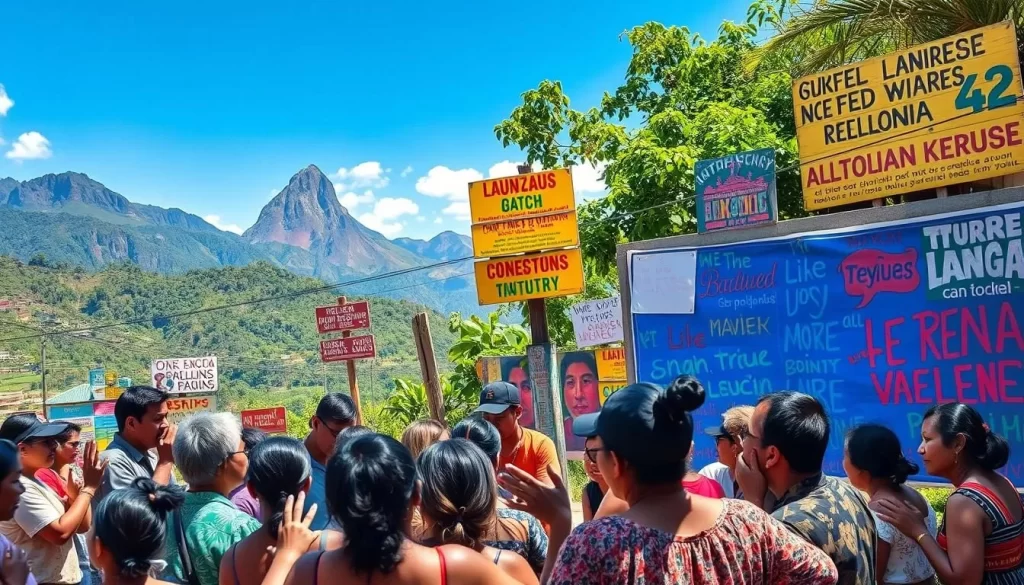
In the Americas, Indigenous languages like Navajo and Cree continue to thrive despite centuries of change. Navajo, for example, has over 200,000 speakers, making it the most spoken Native American language. These languages are more than just words; they are a living testament to cultural identity and heritage.
Creole languages, particularly louisiana creole, offer another fascinating chapter in this story. Born from the blending of French, African, and Native American influences, it serves as a reminder of early settlement and cultural melding. Today, an estimated 10,000 to 15,000 people speak louisiana creole, preserving its unique culture.
Here’s how these languages shape modern communities:
- Indigenous languages connect people to their ancestral roots.
- french creole traditions enrich local festivals and daily life.
- Efforts to revitalize these languages ensure their survival for future generations.
Communities across the state are working to preserve these linguistic treasures. From bilingual education programs to cultural festivals, these efforts highlight the importance of language as a bridge between the past and the present. To learn more about the evolution of Creole languages, explore their rich history and global impact.
Indigenous and Creole languages are more than just a means of communication. They are a testament to the resilience of immigrant and native communities, showcasing the power of culture to endure and evolve. As you explore these linguistic traditions, you’ll discover a legacy that continues to shape the nation’s identity.
Regional Dialects and the American English Mosaic
The way people speak varies dramatically from one city to another. These differences, known as regional dialects, form a vibrant mosaic of American English. Each dialect reflects the unique history and culture of its region, offering a glimpse into local identity.
In New York City, for example, the fast-paced speech and sharp accents are iconic. This dialect is shaped by the city’s diverse population and urban lifestyle. Similarly, Southern states are known for their relaxed drawl, which traces back to early settlement patterns.
Exploring Unique Regional Accents
Every region has its own twist on American English. In the Midwest, the neutral accent is often heard in national media. On the West Coast, speech patterns blend influences from diverse communities, creating a laid-back tone.
Specific words and phrases also define regional identity. For instance, “y’all” is synonymous with the South, while “soda” versus “pop” sparks debates across the country. These linguistic quirks highlight the rich tapestry of American culture.
Here’s a look at how regional dialects vary:
| Region | Key Features | Example Words |
|---|---|---|
| Northeast | Fast-paced, clipped speech | “Cawfee” (coffee) |
| South | Drawn-out vowels, friendly slang | “Y’all” (you all) |
| Midwest | Neutral accent, clear pronunciation | “Pop” (soda) |
| West Coast | Relaxed tone, diverse influences | “Dude” (friend) |
These dialects not only reflect local history but also shape the way people connect. As you travel across united regions, you’ll notice how each accent and word tells a story of resilience and adaptation. For more insights into linguistic diversity, explore this comprehensive guide.
The Impact of Immigration on US Language Diversity
The rich tapestry of languages in America owes much to its history of immigration. From early settlers to recent arrivals, waves of newcomers have transformed the linguistic landscape. This ongoing process has created a vibrant mosaic of culture and communication.
In 1910, over 10 million people reported a mother tongue other than English, including German, Italian, and Yiddish. These early immigrant communities laid the foundation for multilingual neighborhoods. Today, cities like New York and Los Angeles continue to reflect this diversity.

Families play a crucial role in preserving their native language. While children often shift to English within three generations, many households maintain their heritage through stories, songs, and traditions. This effort ensures that cultural identity remains strong.
Census data highlights significant changes over time. The percentage of foreign-born individuals dropped from 14.7% in 1910 to 4.7% in 1970 but rose to 12.9% by 2010. This resurgence has led to a rise in non-English speakers, particularly Spanish, which now accounts for 12.6% of the total population.
Here’s a snapshot of how immigration has shaped language trends:
| Year | Foreign-Born Population | Non-English Speakers |
|---|---|---|
| 1910 | 14.7% | 10 million |
| 1970 | 4.7% | 23.1 million |
| 2010 | 12.9% | 59.5 million |
Despite the dominance of English, immigration remains a key driver of linguistic evolution. From New York to California, communities continue to enrich the nation’s cultural fabric. To learn more about this topic, explore this detailed analysis.
Census Data Insights on US Language Trends
The Census Bureau provides a detailed look into how language use evolves across the country. By tracking the number of speakers over time, it offers valuable insights into the nation’s linguistic diversity.
From 1980 to 2019, the number of people speaking a language other than English at home grew from 23.1 million to 67.8 million. This significant increase highlights the dynamic nature of the population’s communication patterns.
Spanish remains the most widely spoken non-English language, with 55% of its speakers being U.S.-born. This datum underscores the deep-rooted influence of Spanish-speaking communities across the country.
Other languages, like Vietnamese, have seen remarkable growth. From 1980 to 2009, Vietnamese speakers increased by 533%, the largest percentage rise among all languages.
Here’s a snapshot of key trends:
- Spanish speakers grew by 24.4 million from 1980 to 2009.
- Tagalog speakers have a high percentage of individuals with bachelor’s degrees.
- Chinese and Vietnamese households often report limited English proficiency.
These findings help shape policies and services in various states. For example, bilingual education programs are more common in areas with high non-English speaker populations.
Understanding these trends allows you to appreciate the rich tapestry of language spoken across the nation. To explore more about linguistic diversity, check out this comprehensive guide.
Conclusion
The rich tapestry of language in this country reflects its dynamic history and evolving identity. From early 20th-century migrations to modern multicultural expressions, every word and dialect tells a story. Over 350 languages are spoken across homes, showcasing the nation’s diversity.
Immigrant influences have shaped this linguistic landscape, blending traditions into a vibrant cultural mosaic. Spanish, Chinese, and other languages thrive alongside English, enriching communities. This diversity is a testament to the nation’s adaptability and inclusivity.
As you explore different regions, you’ll notice how each form of communication connects people. From urban centers to rural areas, language bridges cultures and fosters understanding. It’s a reminder that every voice contributes to the nation’s unique identity.
To learn more about this fascinating topic, check out this detailed report. Embrace the beauty of linguistic diversity—it’s a cornerstone of this country’s heritage.
The above is subject to change.
Check back often to TRAVEL.COM for the latest travel tips and deals.
Here are some Tours & Sightseeing suggestions that might pique your interests!
